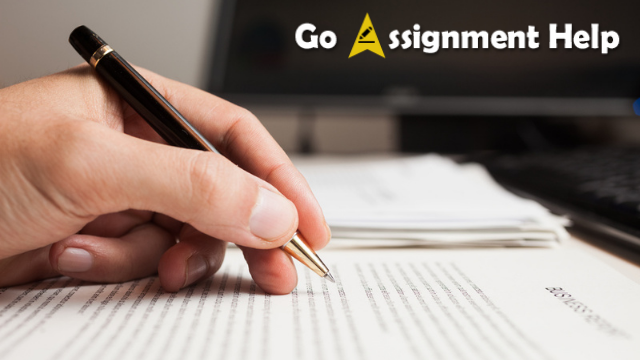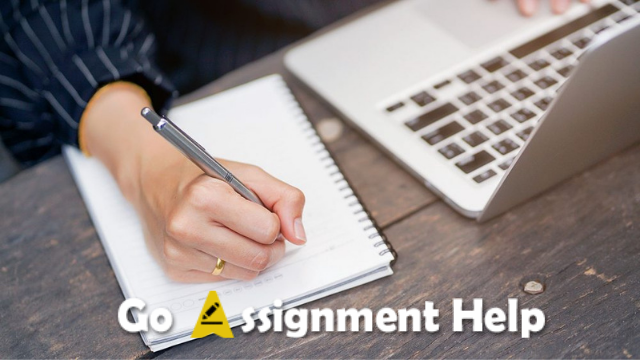How to Come Up with the Perfect Essay Format?
Mar 2,22
An Essay is a popular form of academic writing. Essays are often used in the humanities and social sciences, but they can also be found in other disciplines such as science or engineering. Essays typically present their author’s perspective on the topic at hand, although there are many exceptions to this rule. Essays may take either an argumentative or descriptive approach to present their subject matter and usually consist of three parts: introduction, body paragraph 1-3 (or A-E), and conclusion.
One of the challenges in writing an essay is deciding on the best way to structure it. There are many possible structures, but not all of them will be appropriate for every essay. The most commonly-used essay formats are:

- Chronological Order: This format presents information in the order it happened. It is often used for recounting events or presenting a process.
- Order of Importance: This format presents information according to its importance. The most important points are presented first, and the least important points are presented last.
- Compare and Contrast: This format compares and contrasts two or more items. It can be used to compare and contrast viewpoints, theories, arguments, etc.
- Cause and Effect: This format presents information in terms of cause and effect. It is often used to explain how one event led to another or how different events are related.
There are other kinds of essay formats that you might have to use while writing college essays, such as:
- Classification: This format presents information in terms of class or category. It is often used to discuss the characteristics that define something, such as people, objects, etc.
- Problem and Solution: This essay format highlights a problem and its solution. Often it begins with an introduction describing the issue at hand followed by steps on how to solve it.
The essay format you choose will depend on the essay’s subject matter and the instructor’s requirements. However, some general essay structure tips make sure your essay is well-organized and easy to read:
- Start with an introduction that introduces the topic of your essay and states your position.
- Write a thesis statement that outlines your essay’s main argument.
- Organize the essay in three parts: introduction, body paragraph(s), and conclusion. You can organize it using either time order or importance order (or both). Use clear topic sentences to introduce each part/paragraph of your essay. Note that some instructors may require different essay structures, e.g., the format for college admission essays is different. The structure of a research paper is also quite different from general academic essays.
- Use examples and evidence to support your essay’s argument.
- Provide a conclusion that summarizes the main points of your essay and leaves your reader with something to think about. This is not necessary in every essay, but it can be helpful in some cases.
10 Types of Essays and Templates You Can Use for Them
The essay format for college essays is quite different from other essay types. If you are asked to write an essay for a scholarship or admission program, check the application instructions because they usually include information about essay structure and length. Here are some common essay formats that can be used in many academic disciplines:
- Autobiographical Essay: This type of essay contains a personal essay combined with some other essay types, such as a descriptive essay or informational essay.
- Classification Essay: This type of essay presents the characteristics that define something (people, objects) in terms of class or category. It can take many forms depending on your purpose and the subject matter you are discussing. If you compare two things, it is similar to a compare and contrast essay.
- Descriptive Essay: This essay type presents an object or event in terms of its physical characteristics: how they look like, sound like, etc. It can also be used to describe the author’s state of mind (emotions). Descriptive essays are often written with sensory details, e.g., sight, sound, touch, etc.
- Expository Essay: This essay type presents information to educate the reader about something you are discussing (people, objects, or events). It is often written with simple language that everyone can understand.
- Narrative Essay: This essay type tells a story that includes personal experiences, feelings, and thoughts.
- Persuasive Essay: This essay type tries to convince the reader to agree with the author’s position on a particular topic. It is often written in argumentative form.
- Process Essay: This essay type explains how something is done or how it works. It can be used for explaining both simple and complex processes.
- Reflective Essay: This essay type allows the author to share their thoughts and feelings about a personal experience. It can be used to discuss both positive and negative experiences.
- Research Paper: A research paper is an essay that requires students to conduct original research on a particular topic. The purpose of this essay is to present the findings of that research clearly and concisely.
- Tutorial Essay: A tutorial essay is an essay in which the author provides specific instructions on how to complete a task or assignment. This type of essay is often used in academic disciplines such as engineering, architecture, law, etc. where students are required to submit original work.
Autobiographical Essay Template
- Cover Page
- Picture of the Subject of the Autobiography
- Title of the Essay
- Your Name
- Date of Submission
- Class
- Early Life (Introduction)
- Birthplace, Date of Birth, and Birth Circumstances
- Family Background and Childhood
- Schools, Colleges, and Early to Young Adult Experiences
- Adult Life and Famous Years (Body)
- Marriage, Children and Personal Life
- What is his/her talent/s?
- What makes this person stand out?
- Important Accomplishments
- Awards & Honors
- The impact he/she had on the World (Good or Bad or Both)
- The impact he/she had on People around him/her
- Conclusion (Summary)
- Your Opinion on the Person
- Quick Summary of Main Points in the Essay
Classification Essay Template
- Introductory Paragraph
- The Subject to be Categorized
- The Purpose of Writing the Essay
- Thesis Statement (identifying different categories)
- Body Paragraphs
- Category 1
- Explanation of the Criteria
- What are its strengths and weaknesses?
- Examples of this category
- Category 2
- Category 3
- …
- Category 1
- Conclusion
- Summarizing each category briefly
- Recommending an additional category (optional)
Descriptive Essay Template
- Introduction
- Opening/Background Statements
- Thesis Statement and First Point or Category
- Supporting Details of First Point or Category
- Body Paragraph I
- Topic Sentence
- Supporting Details
- Concluding Comment
- Body Paragraph II
- Body Paragraph III
- …
- Conclusion
- Restate thesis statement
- Reflect on the initial purpose
- Concluding remarks
Expository Essay Template
- Introduction
- Opening Sentence: You can start with a general but eye-catching statement about the topic that can be a question, a relevant quotation, anecdote, an interesting fact, definition or analogy of the topic, or a dilemma you want to discuss.
- Context: Provide some background information about the topic to help readers understand it better.
- Thesis Statement: Make your main argument or take on the topic clear and support it with evidence in body paragraphs.
- Body Paragraphs
- Topic Sentence: Start with the key idea of the paragraph.
- Supporting Evidence: Follow it with paraphrases, cited quotes, or evidence to support your idea. You can include your own experiences, first-person interviews, or anecdotes here to support your ideas or views.
- Analysis: Clarify how the evidence you have presented supports your idea and overall thesis.
- Transition: Make sure that the end statement of the preceding paragraph and the first sentence or phrase of the succeeding paragraph demonstrates how one idea leaders to another one and are interrelated to each other supporting your overall position well.
- Conclusion
- Present an overview of all main ideas your mention in the essay, how your thought process progresses throughout the essay, and how the information you present can be synthesized to generate new questions to be answered or new steps to be taken.
Narrative Essay Template
- Title or the Name of the Story
- Orientation
- Who or what is involved?
- When and where the story is set?
- Complication or Problem
- How the usual life of characters gets interrupted? (building up the tension)
- Series of Events
- Events that occur because of the complication
- Building up tension that leads to a major drama or high point or climax
- Resolution
- How did the problem got solved?
- Concluding Paragraph
- What is the moral or message of the story? Does it have one?
Persuasive Essay Template
- Essay Topic
- Introduction
- Hook
- Thesis Statement
- Argument #1
- Argument #2
- Argument #3
- …
- Body Paragraph #1
- Argument #1
- Examples #1, 2, 3
- Transition Statement
- Body Paragraph #2
- Argument #2
- Examples #1, 2, 3
- Transition Statement
- Body Paragraph #3
- …
- Conclusion
- Restate Thesis (in different words)
- Restate Arguments (in different words)
- Summarize
Process Essay Template
- Topic
- Attention Getter
- Thesis/Topic Sentence
- First Paragraph: The first step is…
- Second Paragraph: The next step is…
- …
- The Paragraph before Conclusion:.. OR The final step is…
- Conclusion
Reflective Essay Template
- Introduction
- Thesis Statement
- Example #1, #2,…
- Body Paragraph 1
- Example #1 becomes the Topic Sentence
- Supporting Detail #1
- Supporting Detail #2
- Concluding Statement (including transition words or phrases)
- Body Paragraph 2
- Example #2 becomes the Topic Sentence
- Supporting Detail #1
- Supporting Detail #2
- Concluding Statement (including transition words or phrases)
- Body Paragraph 3
- …
- Conclusion
- Restate Thesis (including transition words or phrases)
- Summarize all examples
- Thoughts or Commentary on the Essay Topic (optional)
Research Paper Template
- Introduction
- Start with an attention grabber: It can be a short story, statistics, example, or historical context of the research paper topic
- Overview of subject-related issues, if any
- Definitions of key terminology used in the paper
- Quotes or paraphrase sources for argumentative papers (regarding the controversial nature of the subject)
- Background information of the topic to reveal the direction the paper will take
- For argumentative papers, you may need to include an antithesis paragraph where you present main views opposing your take on the topic
- End with a 1-2 sentence long Thesis Statement that tells the overall focus of the paper and the main points covered in the paper
- Body Paragraphs
- Each paragraph should mention one main point
- Support it with strong examples, details, and explanations
- Address counterarguments if it is an argumentative paper
- Present strong evidence from different sources to support the main point. These may include quotations, paraphrases, and summaries
- Conclusion
- Restate thesis in different words
- Briefly summarize all main points in 1-2 sentences
- In an argumentative paper, write a line or two about opposing views or different consequences
- End with a strong clincher statement that ties well to the attention-grabber sentence in the Introduction

Tutorial Essay Template
- Introduction
- Background of the Design
- Applications of Your Idea or Design
- Your Inspiration
- How did you choose the materials?
- Image of Finished Product #1
- List of Materials Used (pictures optional)
- Step-by-Step Instruction of how to do the task (pictures optional)
- Image of Finished Product #2
- Conclusion
- Summary (if it’s a complicated task)
- Any problems that readers might face while following the instruction and how to resolve them
- Tips and suggestions, if any
- Variations of the task (pictures optional)
- Call for Action
When you are choosing an essay format, it is important to think about the purpose of your essay.
What are your ideas? What do you want to say? How would you like to structure it? Which essay format should you use to best convey the message that you wish to pass on? These questions may seem daunting, but they can be answered with some basic information about essay formats and their purposes. Depending on what type of essay you are writing, there are several essay formats to choose from.
GoAssignmentHelp Essay Writing Services are Popular in the US!
Our essay writers can help you choose the essay format that is best for your essay, and they can provide tips on how to write and format your essay correctly. So, if you are struggling to find the right way to structure your essay, or if you need help formatting it correctly, our experts can assist you.
We can also help you format, edit, and proofread your essay. If you want to make sure that your essay looks its best, we have a team of experienced and talented professionals who are ready to help you get the grades that you deserve.
Contact us today for more information!





0 responses on "How to Come Up with the Perfect Essay Format?"